
Cyberpunk is a subgenre of science fiction in a dystopian futuristic setting that tends to focus on a "combination of lowlife and high tech", featuring futuristic technological and scientific achievements, such as artificial intelligence and cyberware, juxtaposed with societal collapse, dystopia or decay. Much of cyberpunk is rooted in the New Wave science fiction movement of the 1960s and 1970s, when writers like Philip K. Dick, Michael Moorcock, Roger Zelazny, John Brunner, J. G. Ballard, Philip José Farmer and Harlan Ellison examined the impact of drug culture, technology, and the sexual revolution while avoiding the utopian tendencies of earlier science fiction.
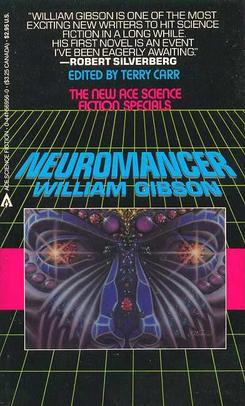
Neuromancer is a 1984 science fiction novel by American-Canadian writer William Gibson. Considered one of the earliest and best-known works in the cyberpunk genre, it is the only novel to win the Nebula Award, the Philip K. Dick Award, and the Hugo Award. It was Gibson's debut novel and the beginning of the Sprawl trilogy. Set in the future, the novel follows Henry Case, a washed-up hacker hired for one last job, which brings him in contact with a powerful artificial intelligence.

Paul J. McAuley is a British botanist and science fiction author. A biologist by training, McAuley writes mostly hard science fiction. His novels dealing with themes such as biotechnology, alternative history/alternative reality, and space travel.
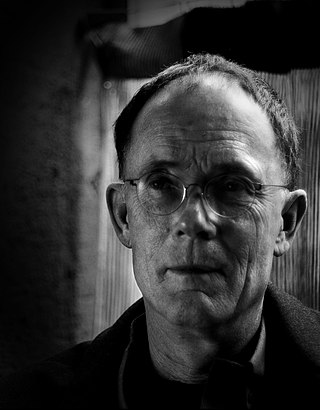
William Ford Gibson is an American-Canadian speculative fiction writer and essayist widely credited with pioneering the science fiction subgenre known as cyberpunk. Beginning his writing career in the late 1970s, his early works were noir, near-future stories that explored the effects of technology, cybernetics, and computer networks on humans, a "combination of lowlife and high tech"—and helped to create an iconography for the information age before the ubiquity of the Internet in the 1990s. Gibson coined the term "cyberspace" for "widespread, interconnected digital technology" in his short story "Burning Chrome" (1982), and later popularized the concept in his acclaimed debut novel Neuromancer (1984). These early works of Gibson's have been credited with "renovating" science fiction literature in the 1980s.

Mona Lisa Overdrive is a science fiction novel by American-Canadian writer William Gibson, published in 1988. It is the final novel of the cyberpunk Sprawl trilogy, following Neuromancer and Count Zero, taking place eight years after the events of the latter. The novel was nominated for the Nebula Award for Best Novel, the Hugo Award for Best Novel, and the Locus Award for Best Science Fiction Novel in 1989.
The Sprawl trilogy is William Gibson's first set of novels, composed of Neuromancer (1984), Count Zero (1986), and Mona Lisa Overdrive (1988).

Burning Chrome (1986) is a collection of short stories written by William Gibson. Most of the stories take place in Gibson's Sprawl, a shared setting for most of his early cyberpunk work. Many of the ideas and themes explored in the short stories were later revisited in Gibson's popular Sprawl trilogy.
Intrusion Countermeasures Electronics (ICE) is a term used in cyberpunk literature to refer to security programs which protect computerized data from being accessed by hackers.
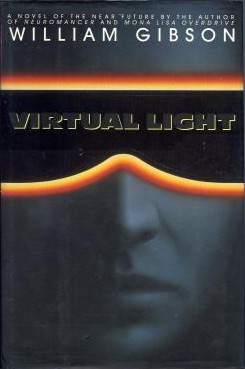
Virtual Light is a science fiction novel by American-Canadian writer William Gibson, the first book in his Bridge trilogy. Virtual Light is a science-fiction novel set in a postmodern, dystopian, cyberpunk future. The term 'Virtual Light' was coined by scientist Stephen Beck to describe a form of instrumentation that produces optical sensations directly in the eye without the use of photons. The novel was a finalist nominee for a Hugo Award, and shortlisted for the Locus Award in 1994.

Idoru is the second book in William Gibson's Bridge trilogy. Idoru is a science-fiction novel set in a postmodern, dystopian, cyberpunk future. One of the main characters, Colin Laney, has a talent for identifying nodal points, analogous to Gibson's own:
Laney’s node-spotter function is some sort of metaphor for whatever it is that I actually do. There are bits of the literal future right here, right now, if you know how to look for them. Although I can’t tell you how; it’s a non-rational process.
Since the advent of the cyberpunk genre, a number of cyberpunk derivatives have become recognized in their own right as distinct subgenres in speculative fiction, especially in science fiction. Rather than necessarily sharing the digitally and mechanically focused setting of cyberpunk, these derivatives can display other futuristic, or even retrofuturistic, qualities that are drawn from or analogous to cyberpunk: a world built on one particular technology that is extrapolated to a highly sophisticated level, a gritty transreal urban style, or a particular approach to social themes.
"Skinner's Room" is a science fiction short story by American-Canadian author William Gibson, originally composed for Visionary San Francisco, a 1990 museum exhibition exploring the future of San Francisco. It features the first appearance in Gibson's fiction of "the Bridge", which Gibson revisited as the setting of his acclaimed Bridge trilogy of novels. In the story, the Bridge is overrun by squatters, among them Skinner, who occupies a shack atop a bridgetower. An altered version of the story was published in Omni magazine and subsequently anthologized. "Skinner's Room" was nominated for the 1992 Locus Award for Best Short Story.
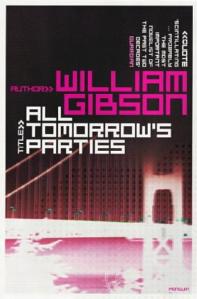
All Tomorrow's Parties is a science fiction novel by American-Canadian writer William Gibson, the third and final book in his Bridge trilogy. Like its predecessors, All Tomorrow's Parties is a speculative fiction novel set in a postmodern, dystopian, postcyberpunk future. The novel borrows its title from a song by Velvet Underground. It is written in the third person and deals with Gibsonian themes of emergent technology. The novel was initially published by Viking Press on October 7, 1999.

Mark D. Pesce is an American-Australian author, researcher, engineer, futurist and teacher.
"The Gernsback Continuum" is a 1981 science fiction short story by American-Canadian author William Gibson, originally published in the anthology Universe 11 edited by Terry Carr. It was later reprinted in Gibson's collection Burning Chrome, and in Mirrorshades, edited by Bruce Sterling. With some similarity to Gibson's later appraisal of Singapore for Wired magazine in Disneyland with the Death Penalty, as much essay as fiction, it depicts the encounters of an American photographer with the period futuristic architecture of the American 1930s when he is assigned to document it for fictional London publishers Barris-Watford, and the gradual incursion of its cinematic future visions into his world. The "Gernsback" of the title alludes to Hugo Gernsback, the pioneer of early 20th century American pulp magazine science fiction.
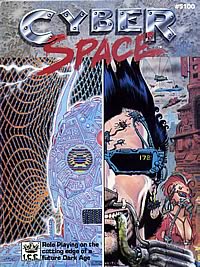
Cyberspace is a near-future cyberpunk role-playing game published by Iron Crown Enterprises (I.C.E.) in 1989 using a revised set of rules from their previously published Space Master role-playing game.

The works of William Gibson encompass literature, journalism, acting, recitation, and performance art. Primarily renowned as a novelist and short fiction writer in the cyberpunk milieu, Gibson invented the metaphor of cyberspace in "Burning Chrome" (1982) and emerged from obscurity in 1984 with the publication of his debut novel Neuromancer. Gibson's early short fiction is recognized as cyberpunk's finest work, effectively renovating the science fiction genre which had been hitherto considered widely insignificant.
"Burning Chrome" is a science fiction short story by Canadian-American writer William Gibson, first published in Omni in July 1982. Gibson first read the story at a science fiction convention in Denver, Colorado in the autumn of 1981, to an audience of four people, among them Bruce Sterling. It was nominated for a Nebula Award in 1983 and collected with the rest of Gibson's early short fiction in a 1986 volume of the same name.
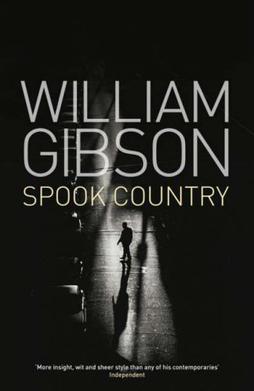
Spook Country is a 2007 novel by speculative fiction author William Gibson. A political thriller set in contemporary North America, it followed on from the author's previous novel, Pattern Recognition (2003), and was succeeded in 2010 by Zero History, which featured much of the same core cast of characters. The plot comprises the intersecting tales of three protagonists: Hollis Henry, a musician-turned-journalist researching a story on locative art; Tito, a young Cuban-Chinese operative whose family is on occasion in the employ of a renegade ex-CIA agent; and Milgrim, a drug-addled translator held captive by Brown, a strangely authoritarian and secretive man. Themes explored include the ubiquity of locative technology, the eversion of cyberspace and the political climate of the United States in the aftermath of the September 11, 2001 attacks.













